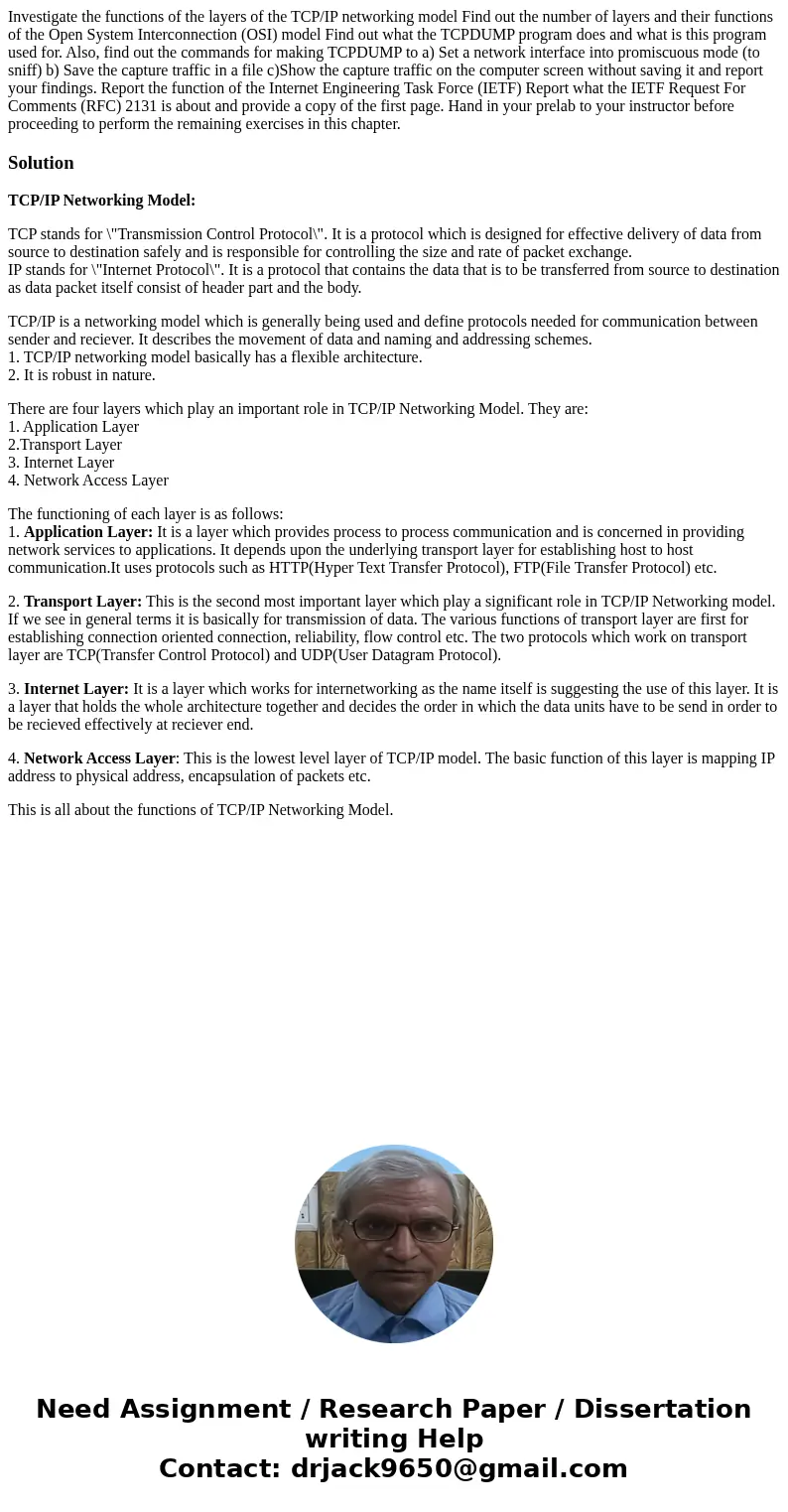Investigate the functions of the layers of the TCPIP network
Solution
TCP/IP Networking Model:
TCP stands for \"Transmission Control Protocol\". It is a protocol which is designed for effective delivery of data from source to destination safely and is responsible for controlling the size and rate of packet exchange.
IP stands for \"Internet Protocol\". It is a protocol that contains the data that is to be transferred from source to destination as data packet itself consist of header part and the body.
TCP/IP is a networking model which is generally being used and define protocols needed for communication between sender and reciever. It describes the movement of data and naming and addressing schemes.
1. TCP/IP networking model basically has a flexible architecture.
2. It is robust in nature.
There are four layers which play an important role in TCP/IP Networking Model. They are:
1. Application Layer
2.Transport Layer
3. Internet Layer
4. Network Access Layer
The functioning of each layer is as follows:
1. Application Layer: It is a layer which provides process to process communication and is concerned in providing network services to applications. It depends upon the underlying transport layer for establishing host to host communication.It uses protocols such as HTTP(Hyper Text Transfer Protocol), FTP(File Transfer Protocol) etc.
2. Transport Layer: This is the second most important layer which play a significant role in TCP/IP Networking model. If we see in general terms it is basically for transmission of data. The various functions of transport layer are first for establishing connection oriented connection, reliability, flow control etc. The two protocols which work on transport layer are TCP(Transfer Control Protocol) and UDP(User Datagram Protocol).
3. Internet Layer: It is a layer which works for internetworking as the name itself is suggesting the use of this layer. It is a layer that holds the whole architecture together and decides the order in which the data units have to be send in order to be recieved effectively at reciever end.
4. Network Access Layer: This is the lowest level layer of TCP/IP model. The basic function of this layer is mapping IP address to physical address, encapsulation of packets etc.
This is all about the functions of TCP/IP Networking Model.

 Homework Sourse
Homework Sourse